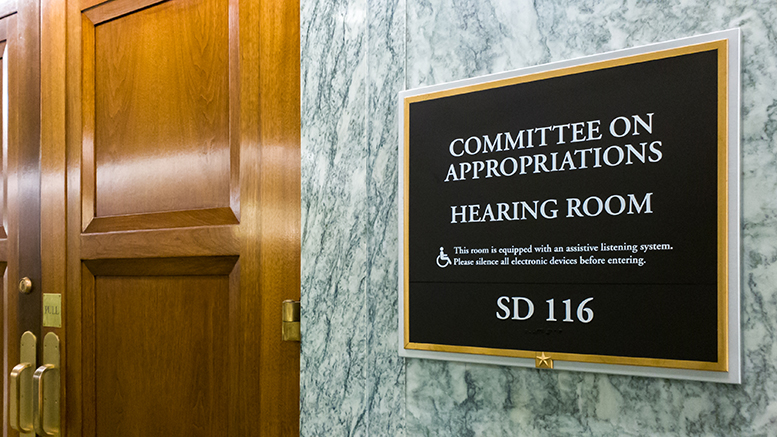Congressional appropriators on Monday released all 12 compromise appropriations bills (packaged into two larger bills) that will fund the federal government through the remainder of fiscal year (FY) 2020.
The breakthrough legislation increases funding for many programs that benefit community colleges and their students, and creates at the U.S. Department of Labor (DOL) a new, community college-focused job training program, which is a top priority for the American Association of Community Colleges (AACC).
These increases come on top of a series of boosts to key programs that have occurred in the last two funding cycles.
The government is currently operating under a short-term “continuing resolution” that expires on Friday, so Congress must pass the new bills before then or pass another short-term bill to avoid a government shutdown.
Moving on a budget deal
The bills just released reflect the budget deal struck by congressional leaders and the Trump administration earlier this year. That deal provided about $24 billion more for domestic discretionary programs than was spent in FY 2019.
Before that budget deal was reached, the House of Representatives acted without regard to the lack of a House-Senate appropriations blueprint and passed a series of appropriations bills that assumed larger spending increases for domestic programs than was ultimately provided in the bicameral deal. The Senate did not move forward on any of its bills until the budget deal was struck, and never acted on its own Labor, Health and Human Services, Education, and Related Agencies (LHHS) legislation.
Since agreeing to overall budget caps, congressional leaders and the administration were negotiating how much of the increased funding would go to each of the 12 spending bills. Monday’s release indicates that $4.9 billion of the $24 billion domestic increase went to the LHHS bill, a little under half of what House appropriators had allocated to it. The result is that programmatic increases in the final legislation were generally not as large as those in the House bill.
More on new training grants program
One of the LHHS bill’s major highlights is the new $40 million Strengthening Community College Training Grants program. It would provide competitive grants of at least $1 million to community colleges to augment their job training initiatives. DOL’s Employment and Training Administration would run it.
The program, championed by House LHHS appropriations subcommittee chair Rosa DeLauro (D-Connecticut), is intended to be a successor to previous, similar programs, such as the Trade Adjustment Assistance Community College and Career Training grants and the Community-Based Job Training Grants. While the lower final spending caps meant that the program was not funded at $150 million as passed by the House, it is nonetheless an extremely positive development that AACC hopes to build on.
In other good news, the legislation would increase the Pell Grant maximum award by $150, to $6,345, for award year 2020-21. The maximum grant has now increased by $425 over the last three funding cycles.
On the other hand, the legislation also would rescind $500 million from unspent Pell Grant program balances to help fund other programs. This rescission does not affect student’s grants, but it potentially spells financing complications for the program in future years.
Department of Education (ED) spending will increase by $1.4 billion (a 1.8 percent), allowing for spending boosts to important programs, including:
- Perkins CTE Basic State Grants, $20 million (1.6 percent)
- Adult Basic Education state grants, $15 million (2.3 percent)
- Supplemental Educational Opportunity Grants, $25 million (3 percent)
- Federal Work Study, $50 million (4.4 percent)
- HEA Title III-A Strengthening Institutions, $8 million (8 percent)
- HEA Title V – Hispanic Serving Institutions, $19 million (15 percent)
- Child Care Access Means Parents in School (CCAMPIS), $3 million (6 percent)
Something to watch
The legislation’s accompanying report encourages ED to focus Title III-A grants on workforce-oriented programs, potentially altering the nature of the program. This concerns AACC, which will monitor the department’s response.
The report also directs ED to evaluate the Second Chance Pell (for incarcerated individuals) experimental site program and to issue guidance for implementing the Ability-to-Benefit provisions that allow non-high school graduates to access student aid.
On the DOL side
The funding legislation would provide DOL programs with relatively more modest increases, except for registered apprenticeship grant funding, which rose from $160 to $175 million. The Workforce Innovation and Opportunity Act formula programs were each increased by about 1.1 percent.
The Commerce, Justice and Science appropriations bill raised funding for the National Science Foundation’s Advanced Technological Education (ATE) program to $75 million, a roughly $10 million hike. This is the ATE program’s first significant increase in several years and it will be felt on community college campuses.
Given a variety of factors, community colleges students and institutions have reason to be thankful for this outcome. While the federal government has much more to do for our students, another funding cycle of widespread funding increases is encouraging.




